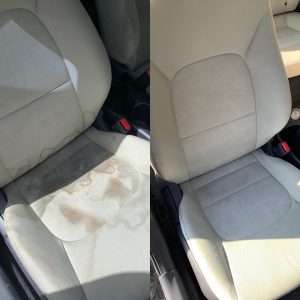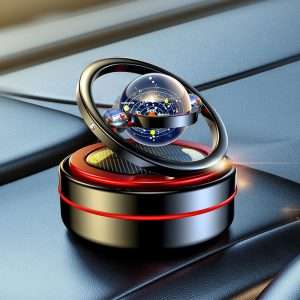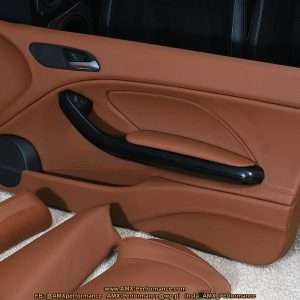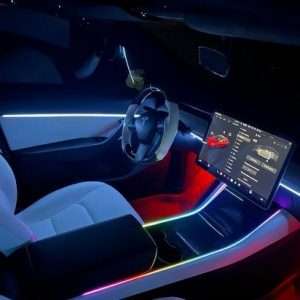Taking great car interior photos is essential for selling a car, showcasing your detailing work, or simply capturing the beauty of a well-designed cabin. It’s not as simple as pointing and shooting. Good lighting and composition are key.
This guide will provide you with the tips and tricks you need to capture stunning car interior photos. We’ll cover everything from equipment to editing.
Essential Equipment
While a professional camera can be helpful, you can achieve excellent results with a smartphone. A good lens is important. Consider these items:
- Camera: A DSLR, mirrorless camera, or even a high-quality smartphone camera.
- Lens: A wide-angle lens (e.g., 16-35mm) is ideal for capturing the entire interior.
- Tripod: Essential for sharp, blur-free images, especially in low light.
- Lighting: Natural light is best, but a reflector or external flash can be useful.
Don’t underestimate the power of a good cleaning. A clean interior makes a huge difference in the final photo.
Composition and Angles
Composition is crucial for creating visually appealing car interior photos. Experiment with different angles and perspectives.
- Driver’s Seat Perspective: Captures the feeling of being behind the wheel.
- Passenger Seat Perspective: Offers a different view of the dashboard and center console.
- Rear Seat Perspective: Showcases the spaciousness of the interior.
- Detail Shots: Focus on specific features like the steering wheel, seats, or infotainment system.
Pay attention to the lines and shapes within the interior. Use them to guide the viewer’s eye.
Lighting Techniques
Lighting is arguably the most important aspect of car interior photography. Good lighting can make a huge difference.
Natural Light: The best option is often natural light. Shoot during the “golden hour” (shortly after sunrise or before sunset) for soft, warm light. Avoid direct sunlight, which can create harsh shadows.
Artificial Light: If natural light is limited, use a reflector to bounce light into the interior. An external flash can also be used, but be careful not to overexpose the image.
FAQ: Car Interior Photography
Q: What’s the best time of day to shoot car interior photos?
The golden hour (shortly after sunrise or before sunset) is ideal for soft, warm light. Overcast days can also provide even, diffused lighting.
Q: How do I avoid glare in my photos?
Use a polarizing filter on your lens to reduce glare on the dashboard and windows. Also, try shooting from different angles to minimize reflections.
Q: What settings should I use on my camera?
Use a low ISO (e.g., 100-400) to minimize noise. Set your aperture to around f/8 to f/11 for good depth of field. Use a tripod to allow for longer shutter speeds in low light.
Q: How important is post-processing?
Post-processing is essential for fine-tuning your images. Adjust the brightness, contrast, and color balance to achieve the desired look. You can also remove any distractions or blemishes.
Post-Processing Tips
Once you’ve captured your images, post-processing is where you can really make them shine. Software like Adobe Lightroom or Photoshop can be invaluable.
Basic Adjustments
- Exposure: Adjust the overall brightness of the image.
- Contrast: Increase or decrease the difference between the light and dark areas.
- Highlights & Shadows: Fine-tune the brightness of the brightest and darkest areas.
- White Balance: Correct any color casts to ensure accurate colors.
- Clarity & Texture: Enhance the details and sharpness of the image.
Advanced Techniques
For more advanced editing, consider these techniques:
- Lens Correction: Correct any distortion caused by the lens.
- Noise Reduction: Reduce any unwanted noise or grain in the image.
- Spot Removal: Remove any distractions or blemishes, such as dust or scratches.
- Selective Adjustments: Make adjustments to specific areas of the image using masks or brushes.
Remember to save your edits as a new file to avoid overwriting the original image. Experiment and find what works best for your style.
Showcasing Specific Features
Sometimes, you want to highlight specific features of the car’s interior. This requires a different approach than capturing the overall scene.
Focusing on Details
Use a macro lens or the macro mode on your smartphone to capture close-up shots of details like:
- Stitching on the seats
- The texture of the dashboard
- The design of the steering wheel
- The infotainment screen
Pay attention to the lighting and composition to create visually appealing detail shots. A shallow depth of field can help to isolate the subject and create a sense of depth.
Highlighting Technology
Modern car interiors are often packed with technology. Showcase these features by:
- Capturing the infotainment screen in action
- Highlighting the digital instrument cluster
- Showing off the ambient lighting
Make sure the technology is clean and free of fingerprints. Use a clean, dry cloth to wipe down the surfaces before taking photos.
Creating a Consistent Style
If you’re shooting car interiors for a website or social media, it’s important to create a consistent style. This will help to create a cohesive and professional look.
Choosing a Color Palette
Select a color palette that complements the car’s interior. Use these colors in your editing to create a consistent look.
Using Presets
Create or download presets for your editing software to apply the same adjustments to all of your images. This will save you time and ensure consistency.
Maintaining a Consistent Composition
Use the same composition techniques for all of your images. This will help to create a sense of visual harmony.
By following these tips, you can create stunning car interior photos that will impress your audience.
Equipment Recommendations
Having the right equipment can significantly improve the quality of your car interior photos. While a professional DSLR or mirrorless camera is ideal, you can also achieve great results with a smartphone.
Cameras
- DSLR/Mirrorless: Offers the best image quality and versatility.
- Smartphone: Convenient and capable, especially with advancements in mobile photography.
Lenses
- Wide-Angle Lens: Ideal for capturing the entire interior in a single shot.
- Standard Lens: Versatile for various shots, including details and overall views.
- Macro Lens: Perfect for capturing close-up details.
Accessories
- Tripod: Essential for stability, especially in low-light conditions.
- Polarizing Filter: Reduces glare and reflections.
- Reflector: Bounces light to fill in shadows.
- Cleaning Supplies: Keep the interior clean and free of dust and fingerprints.
Remember, the best equipment is the one you have with you. Don’t let a lack of expensive gear hold you back from experimenting and learning.
Dealing with Challenging Lighting Conditions
Car interiors often present challenging lighting conditions. The combination of bright sunlight and dark shadows can make it difficult to capture a well-exposed image.
HDR Photography
High Dynamic Range (HDR) photography involves taking multiple photos at different exposures and then combining them in post-processing to create a single image with a wider dynamic range. This can be a great way to balance the bright and dark areas in a car interior.
Using Fill Flash
A fill flash can be used to brighten up the shadows in a car interior. Use it sparingly to avoid creating harsh highlights.
Shooting on Overcast Days
Overcast days provide soft, even lighting that is ideal for car interior photography. The clouds act as a natural diffuser, reducing harsh shadows and glare.
Experiment with different lighting techniques to find what works best for your style and the specific conditions you’re shooting in.
Showcasing the Car’s Unique Features
Every car has unique features that make it stand out. Highlight these features in your photos to showcase the car’s personality and appeal.
Luxury Features
If the car has luxury features like leather seats, wood trim, or a premium sound system, make sure to capture them in detail. Use close-up shots to highlight the quality and craftsmanship.
Sporty Features
If the car has sporty features like a racing steering wheel, bucket seats, or a performance gauge cluster, emphasize these elements in your photos. Use dynamic angles and compositions to convey the car’s performance capabilities.
Practical Features
If the car has practical features like a spacious trunk, a versatile cargo area, or a user-friendly infotainment system, showcase these elements in your photos. Use wide-angle shots to demonstrate the car’s functionality.
By highlighting the car’s unique features, you can create photos that are both visually appealing and informative.
Ethical Considerations
When photographing car interiors, it’s important to be mindful of ethical considerations. Always respect the privacy of the car’s owner and avoid capturing any personal belongings in your photos.
Obtaining Permission
If you’re photographing a car that belongs to someone else, always obtain their permission first. Explain your intentions and make sure they’re comfortable with you taking photos of their car’s interior.
Protecting Privacy
Avoid capturing any personal belongings in your photos, such as wallets, phones, or documents. If you accidentally capture something personal, blur it out in post-processing.
Respecting Property
Treat the car with respect and avoid causing any damage. Be careful not to scratch the paint or damage the interior. Clean up after yourself and leave the car in the same condition as you found it.
By following these ethical guidelines, you can ensure that your car interior photography is both professional and respectful.




